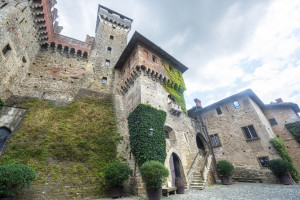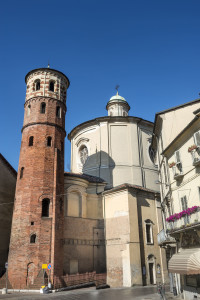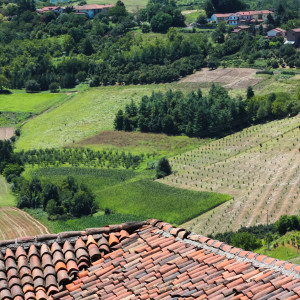Good things come in small packages – it’s an excellent concept to keep in mind with the annual gift-giving season staring down at many of us. It’s also good concept for wine lovers, as well, as we know that the smaller the region (DOC, AOC, GI), the more prestigious, unique, and defined a wine is likely to be.
In honor of that thought, I went in search of those tiny “jewel-boxes” of Italian wine, and came up with three of the most fascinating – and entirely tiny – DOCs to be found out of Italy’s total (at least for today) of 332. These three vineyards just happen to be located in Piedmont, however, my search was not limited to Piedmont – it just turned out that way!
I am sure, with their limited production, these wines are difficult to find outside of their native home – but if you have been lucky enough to ever try one of these wines – let us know in the comments below!
Rubino di Cantavenna DOC: This tiny gem of a DOC, located in the eastern section of Piedmont, has 5 acres (2 hectares) dedicated to vines, and an annual production of just 1,380 cases. The area is part of the lowlands south of the Po River, at the far end of the Monferrato hills. The following communes are permitted to produce Rubino di Cantavenna: Moncestino, Villamiroglio, Camino and Gabiano (which has its own DOC, with slightly different regulations concerning the wine blend, and at 2 acres/1hectare definitely qualifies as its own jewel box of a DOC, but has not produced any wine in the last few years.)
Rubino di Cantavenna is approved for red wines based on the Barbera grape variety. The rules of the DOC mandate that Barbera be 75-90% of the blend, with the remainder (10-25%) being Freisa and/or Gignolino. The wine must be aged approximately 14 months before release. (To make things difficult, the Disciplinare of Rubino di Cantavenna dictates that the wine must not be released before January 1, of the second year following the vintage.) Wines of the region tend to be pale red in color, with aromas of plum, cherry, blackberry and vanilla, with perhaps a touch of toasty oak. The wine is generally moderate in tannin, bright in acidity, and with a slightly (ever-so-pleasant) bitter tinge at the finish.
Loazzolo DOC: This tiny region claims 5 acres (2 hectares) of vineyards, and produces on average just 425 cases of wine a year. This region produces a sweet, botrytis-affected white wine based on the Moscato grape variety. The vineyards of the Loazzolo DOC overlook the Bormida River, about 15 miles south of the town of Asti on the southern edge of the Moscato d’Asti area.
According to the Disciplinare of Loazzolo the wines must be made with 100% Moscato grapes, and may not be harvested until after September 20. The grapes must be dried on or off the vine, must be affected by botrytis, and ripe enough to give the wine a minimum of 11% alcohol. The finished wine must have a minimum of 5% residual sugar and must be aged for a minimum of 2 years, including 6 months in barrel, before release. Typical descriptors of Loazzolo include Moscato’s “signature” floral, musky, and tropical fruit aromas, as well as vanilla, honey, and rich texture on the palate.
Strevi DOC: Saving the tiniest for last, the Strevi DOC claims just 2 acres (1 hectare) of vineyards, and produced 233 cases of wine in 2012. Located in the town of Strevi, located on the eastern edge of the Moscato d’Asti area and bounded to the east by the Bormida River, Strevi was awarded its DOC in 2005. According to the Disciplinare of Strevi, grapes used for Strevi DOC wine must be grown in “vineyards on hilly, sunny ridges with clay soils based on marl and limestone.”
The grapes must be 100% Moscato and the wine must be produced in the passito style, with a minimum alcohol content of 12.5% and two years of required aging. All of these factors combine to make Strevi DOC a rich, golden-yellow wine with amber flecks, richly aromatic with notes of candied citrus, apple, sweet spices and honey, rich and sweet on the palate – and a fantastic match for foie gras, cheese, or apple-based desserts.
Thanks to our friends at Italian Wine Central for the acreage and production statistics!
Post authored by Jane A. Nickles, CSS, CWE – your SWE Blog Administrator


